Discover Promotion Details
Learning Objectives
After completing this unit, you’ll be able to:
- Edit the details of a promotion.
- Manage the products in a promotion.
- Explain the benefits of the volume planning card, scenario planning card, and promotion Profit and Loss (P&L) details.
Edit Promotion Details
In the previous module, Gustavo created a Trade Calendar view to display promotions. He now reviews and edits the promotion May Push and the tactics associated with it. He adds suitable products to the promotion and uses the volume planning card (VPC) to estimate the sales volume for the products. Next, Gustavo uses the Scenario Planning card to define the promotion scenarios and the promotion P&L view to study the values of the KPIs associated with the promotion. Follow along as Gustavo explores these features.
Gustavo uses the promotion edit mode to update a promotion and the associated tactic. Here’s how he does it.
- Click
 .
.
- Find and select Advanced Promotions.
- On the Promotions page, select a promotion, for example May Push.
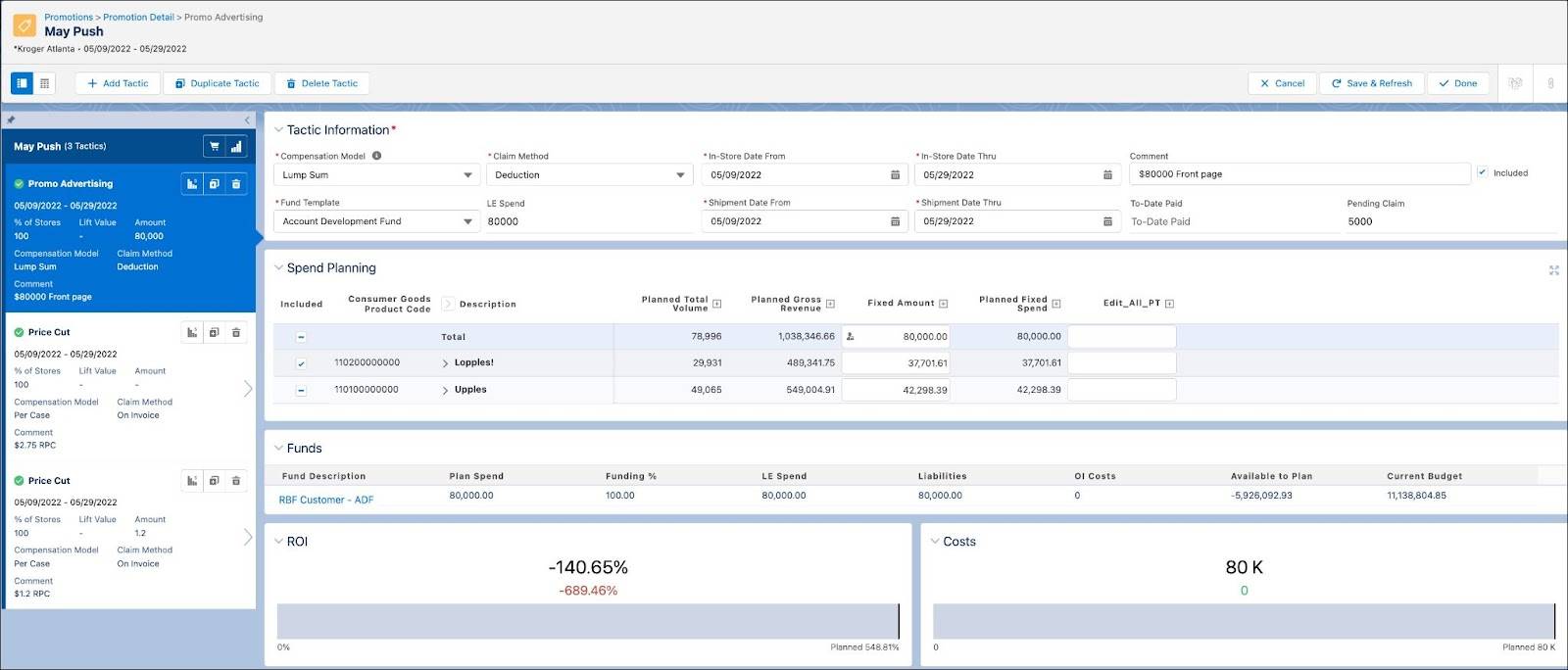
- Click Edit.
- Review the related tactics on the left pane.
- Click a tactic to view its details on the right pane.
- Edit the tactic details, if required.
- Click Done.
For more information, see Promotion Edit Mode.
Note:
You can also edit a promotion from the Trade Calendar.
- To add a tactic, click Add Tactic.
- To duplicate a tactic, click Duplicate Tactic or
 .
.
- To delete a tactic, click Delete Tactic or
 .
.
- To view spend planning details for a tactic, click
 .
.
Manage the Products
Products are the core part of a promotion. As a promotion planner, KAMs like Gustavo decide whether a promotion has a dynamic or a fixed set of products. This setting determines if the product update is automatic or manual.
- For dynamic products, select the filter criteria that interact with the CG Cloud Processing Service to determine the included products. The product list automatically updates with each change to the product master data.
- With fixed or static products, manually search for and add the products one by one to the promotion. Once the products are included in the promotion or tactic, they aren’t deleted, even if the filter criteria of the products changes.
Gustavo had selected the Product Definition Level as Promotion when he configured the promotion template. Thus, he can add products at the promotion level and exclude the products from the Spend Planning card at the tactic level. And because products are defined at the promotion level, the tactics in the promotion have the products defined at the promotion level for the tactic.
Use Filters to Add Products
Gustavo uses product filters to add products to a promotion. Here’s how he does it.
- On a promotion record page, click Edit.
- On the Products tab, click Manage Products.
- In the Filters panel, select one or more filters.
- Click Apply.
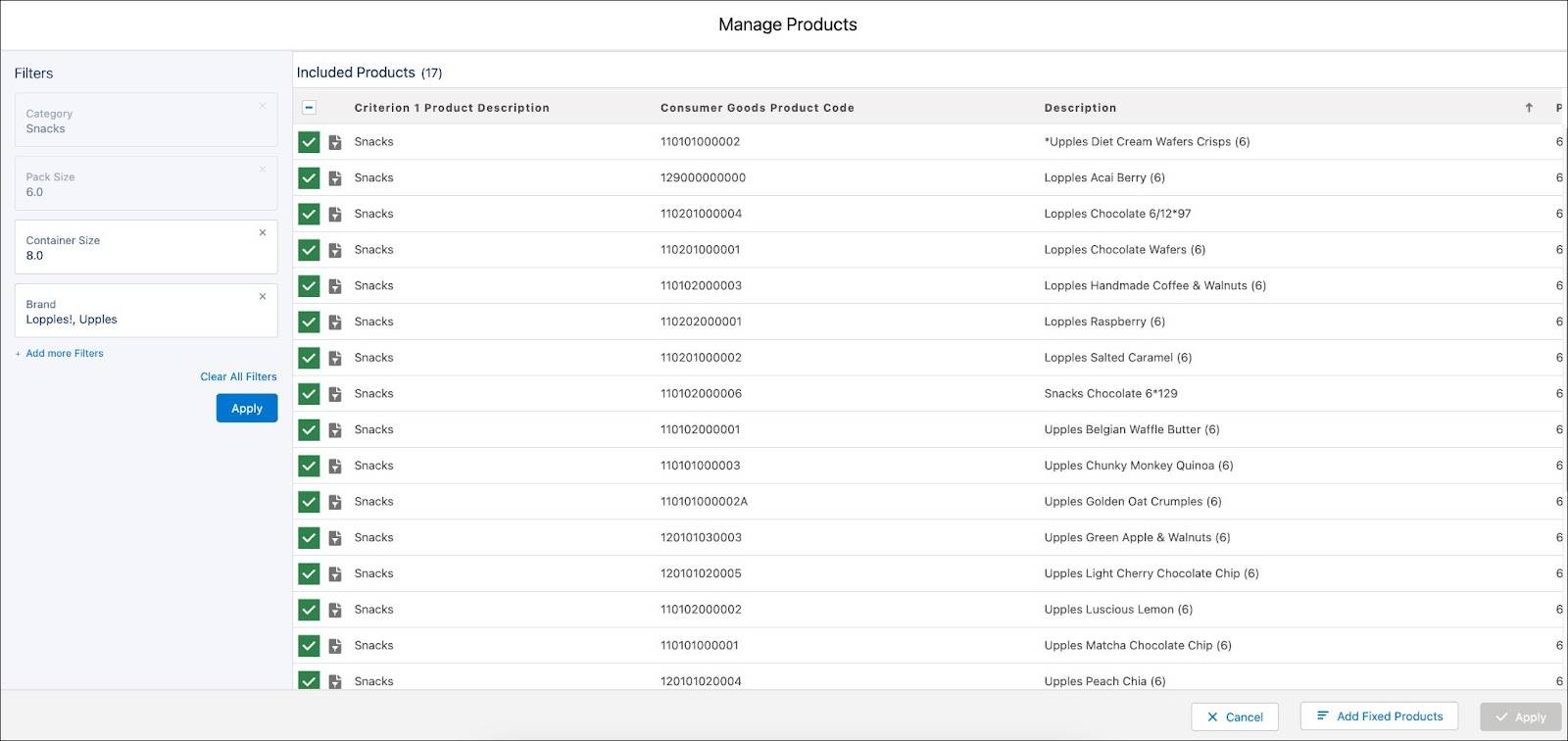
To add products manually, click Add Fixed Products.
View the Volume Planning Card
Volume planning allows the KAM or promotion planner to accurately estimate the sales volume of products for the promotion timeframe. The VPC shows KPIs that help KAMs like Gustavo view and adjust the promotion volume to maximize returns.
To access the VPC, Gustavo clicks  from the promotion level in the tactic navigation tree.
from the promotion level in the tactic navigation tree.
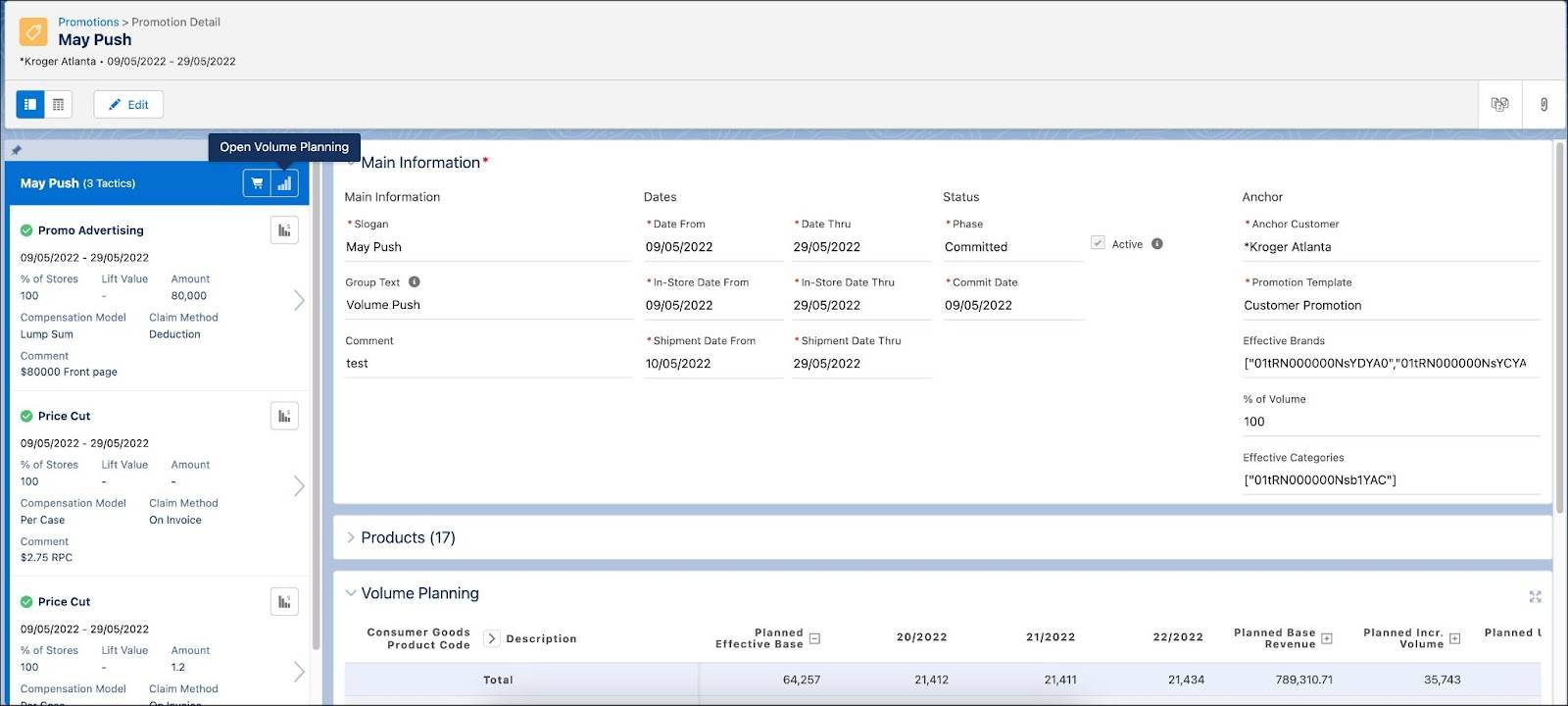
CG Cloud displays the VPC.
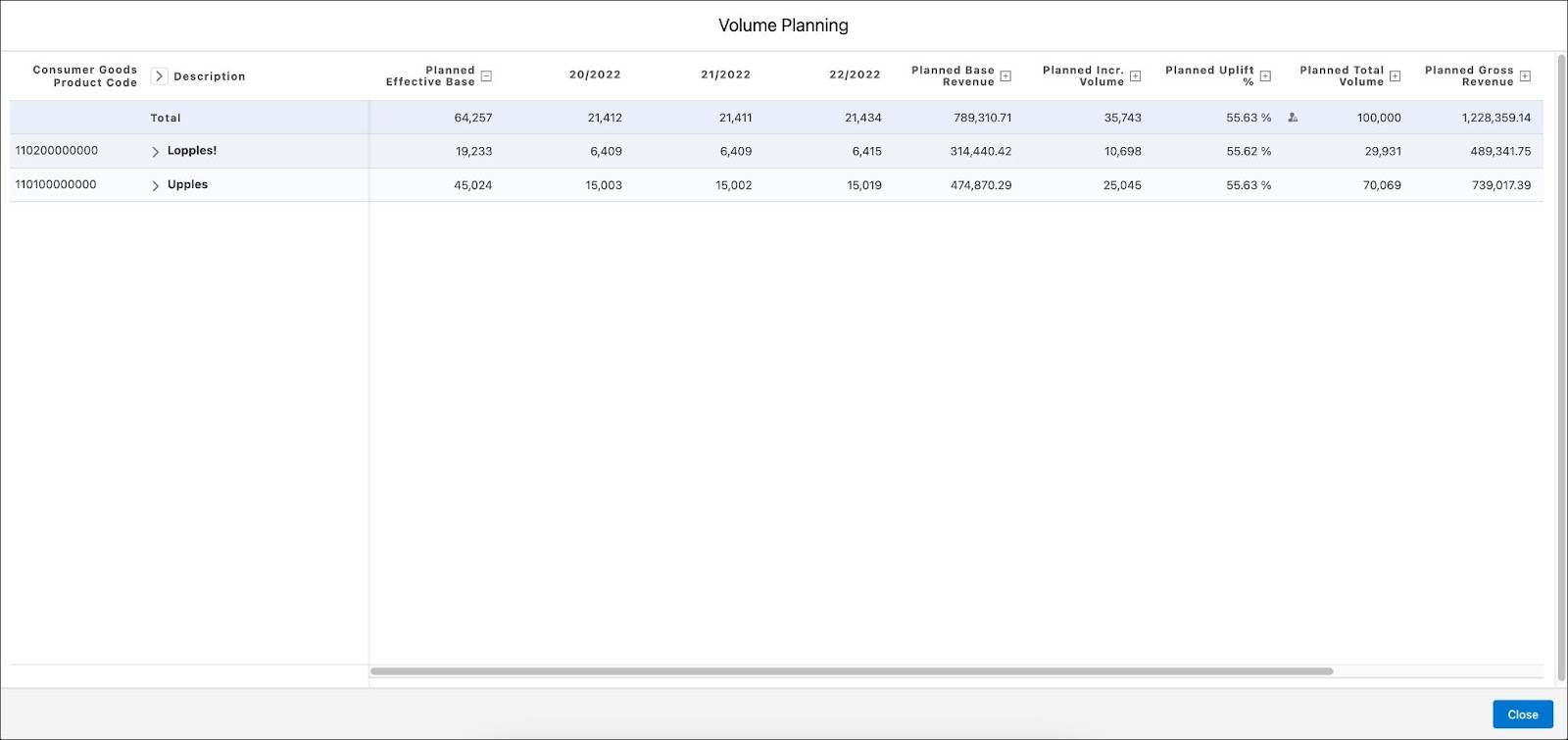
While CG Cloud Trade Promotion Management reads and calculates volume and other relevant volume-planning information in the VPC, Gustavo can easily edit or overwrite the values. The other dependent values in VPC get updated based on his input. This allows the promotion planner to see the changes in real time and effectively plan the sales volume for the upcoming promotion.
The VPC supports Gustavo from a usability perspective when he plans promotional volumes on a total promotion level.
For more information, see View the Volume Planning Card.
View the Scenario Planning Card
Scenario planning is like What-If scenarios, allowing promotion planners to select the best scenario after comparison.
-
Adjust tactics: A promotion planner uses this feature for a What-If scenario planning by activating or deactivating different tactics.
-
Adjust other things: A promotion planner makes adjustments with different sets of products for each tactic, different timeframes, spends, or lift planning. Then they select the best scenario after a comparison.
-
Use the Scenario Planning Card: A promotion planner compares different scenarios using a specific set of KPIs directly on the Scenario Planning Card on the promotion.
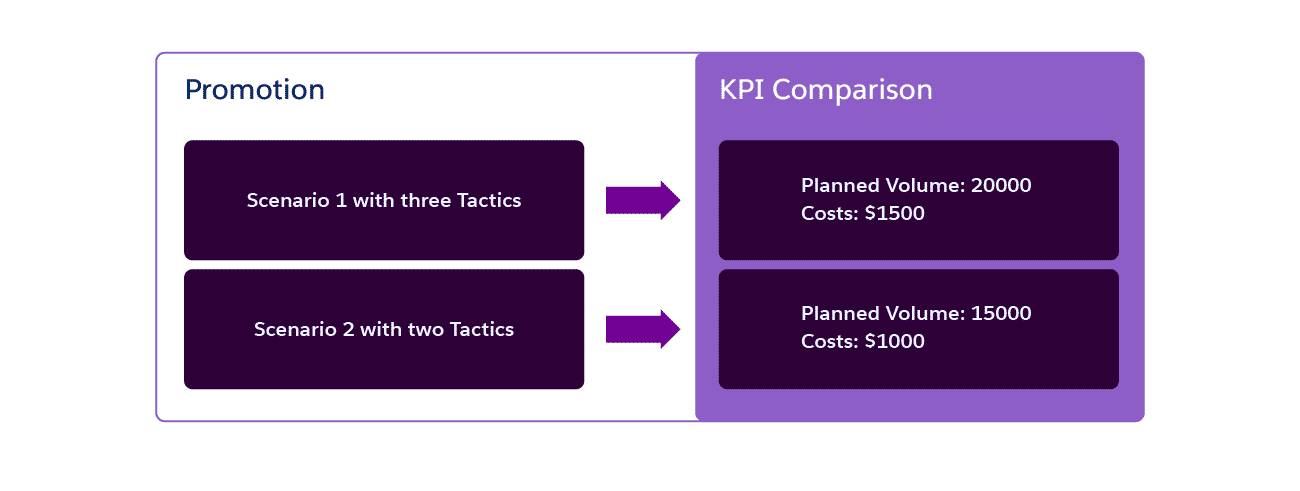
For example, a promotion planner likes to know what the sales volume is if they have two tactics compared to three for a promotion planned in the same timeframe. Can the target be achieved with one less tactic, thus reducing the cost of the promotion? Yes! This can be achieved with Promotion Scenario Planning.
Scenario planning allows KAMs and promotion planners to define multiple alternatives or scenarios for the same promotion. They can compare the expected results and choose the best scenario. Each scenario can have a different combination of promotion tactics and adjustment KPIs, which helps to identify the best-fit scenario for the promotion.
If scenario planning is enabled, the Scenario Planning Card provides the opportunity to perform the What-If scenarios. To access the Scenario Planning card, click  on the Promotion Detail page.
on the Promotion Detail page.
The Scenario Planning card shows up to five scenarios for each promotion. Only one scenario can be active at a time. To make the S1 scenario active, click S1 next to Active Scenario. Next, run the promotion and calculate the promotion KPIs according to the active scenario. The details of the active scenario is also included in the Account Plan.
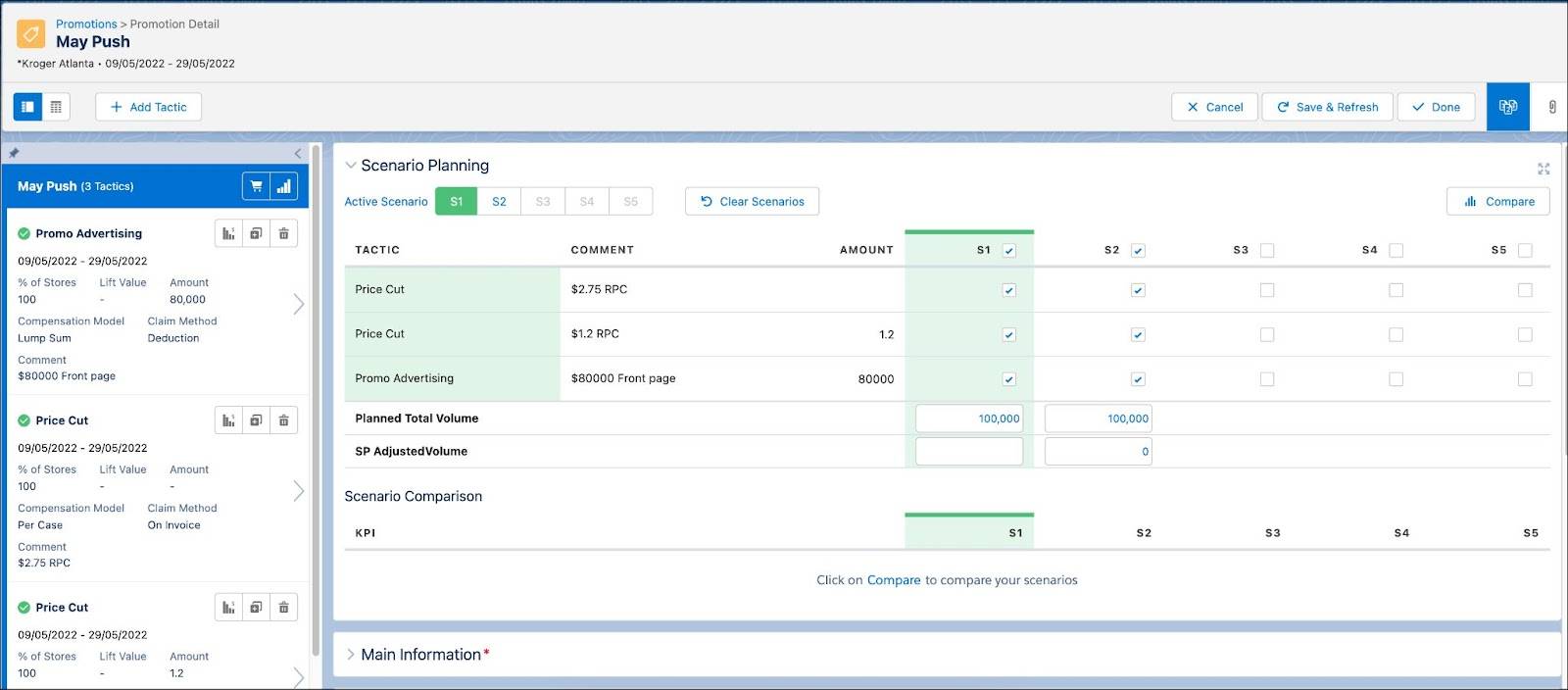
The following options are available on a Scenario Planning Card.
-
Include or Exclude Tactics: Include or exclude tactics for each scenario by selecting the checkboxes corresponding to the tactic in the Scenario Planning card.
-
Compare: Click Compare to generate KPI values for all the scenarios you’ve defined.
-
Clear: Click Clear Scenarios to remove all the scenarios except the active one.
-
Adjustment KPIs: Configure the values of the KPIs for each scenario if the promotion is in edit mode. For example, Gustavo can specify the value for Planned Total Volume that's expected from a specific promotion scenario. These KPIs are displayed right below the scenarios in the Scenario Planning card. You can configure up to three adjustment KPIs.
-
Comparison KPI: Compare the KPIs listed in the Scenario Comparison section to compare between different scenarios.
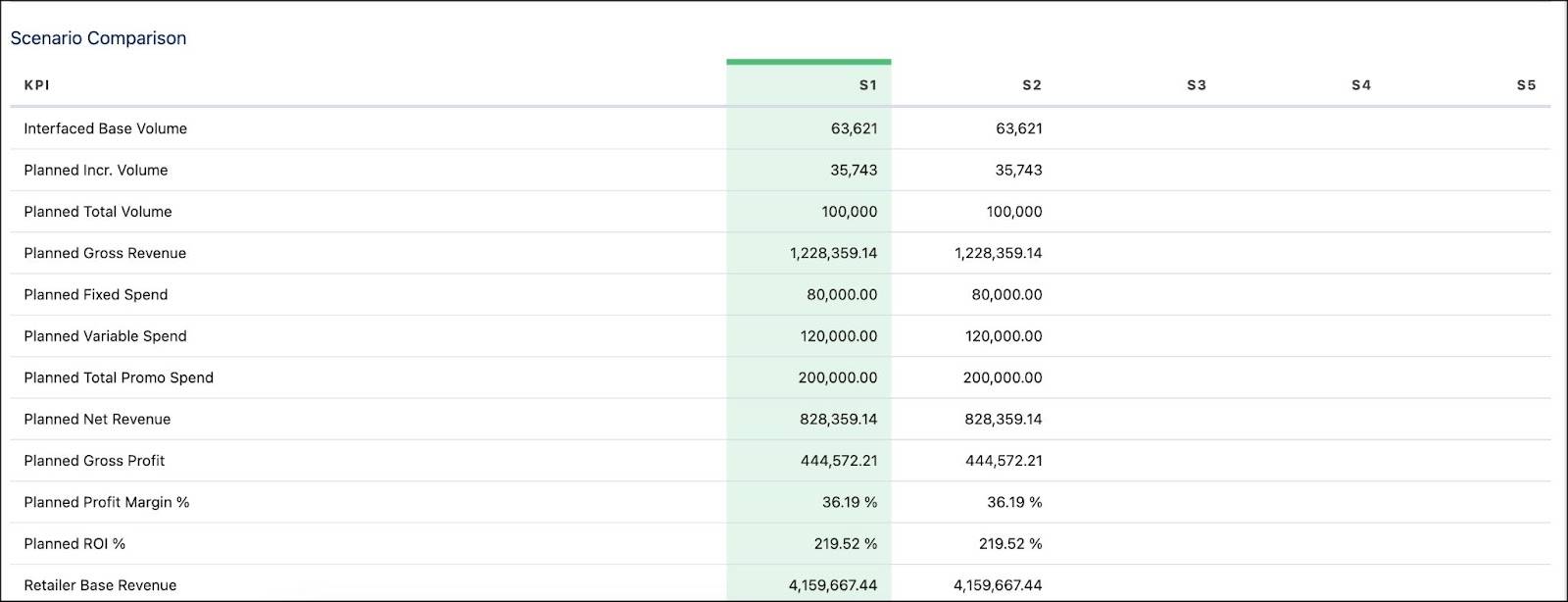 The Scenario Planning card can display up to 15 comparison KPIs. For example, you can compare the Planned Gross Revenue that can be achieved by using the scenarios S1 and S2.
The Scenario Planning card can display up to 15 comparison KPIs. For example, you can compare the Planned Gross Revenue that can be achieved by using the scenarios S1 and S2.
-
Duplicate a Tactic: Select a tactic, and click Duplicate to create a copy of the tactic. By duplicating a tactic, you can make changes, as required, and compare it with the original tactic.
For more information, see View the Scenario Planning Card.
View the Promotion P&L
The Promotion P&L view shows the flexible period values, such as weekly values of a promotion's KPIs for each period in the promotion timeframe. This view also shows the total value for the entire promotion period.
Gustavo wants to configure the KPIs to show on the Promotion P&L view. So he associates a KPI set with the promotion template.
To access the Promotion P&L information, click  on the Promotion Detail page.
on the Promotion Detail page.
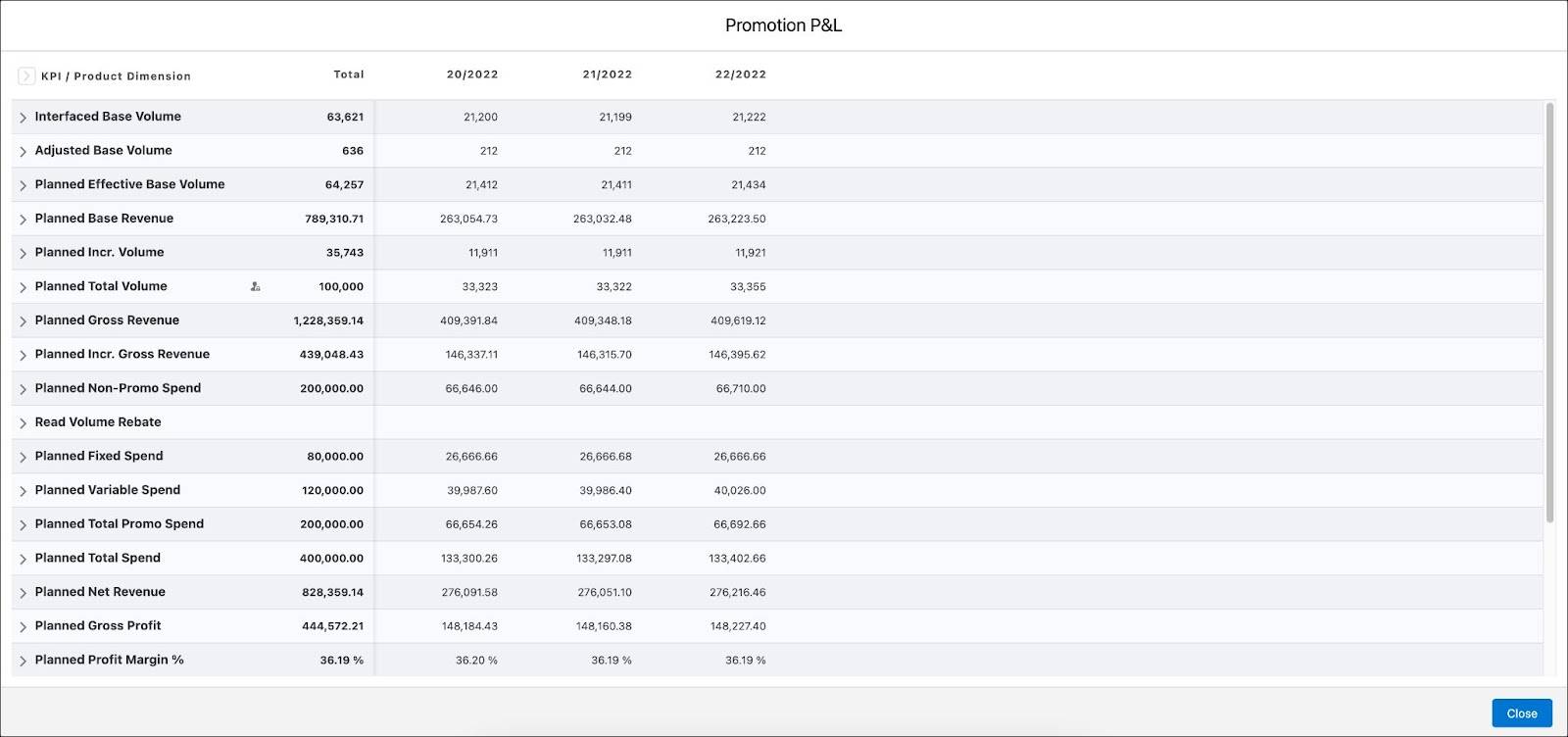
KAMs like Gustavo can enter cost types, such as lump sum costs in editable KPIs. CG Cloud validates user entries for editable KPIs in the P&L sheets.
For more information, refer to See the Promotion P&L View.
Gustavo has learned about promotion, volume planning, scenario planning, and promotion P&L. Next, he explores tactics, tactic funds, and spend planning. Let’s follow along in the next unit.
Resources